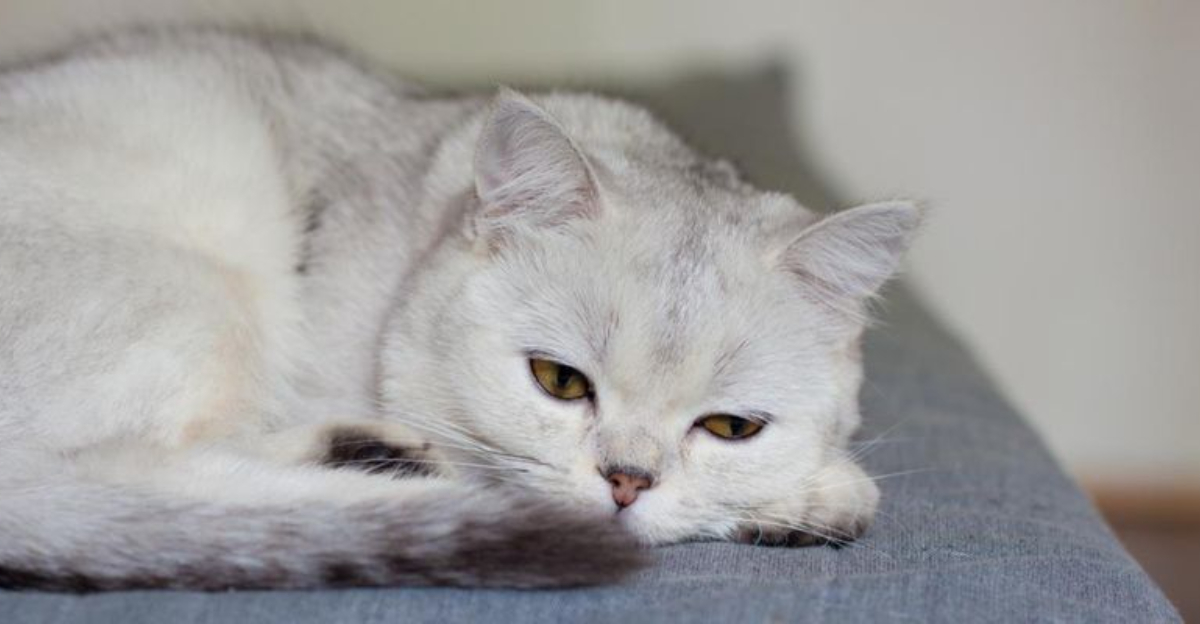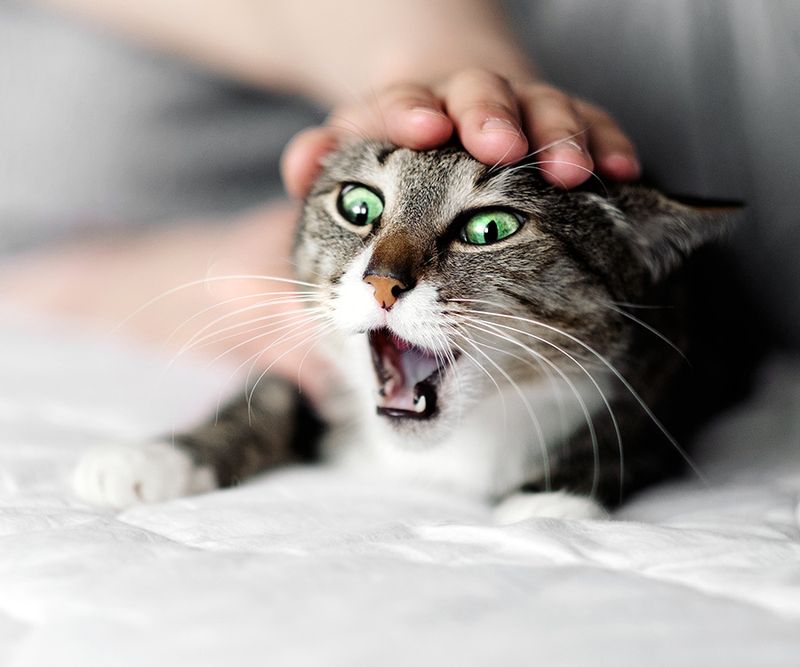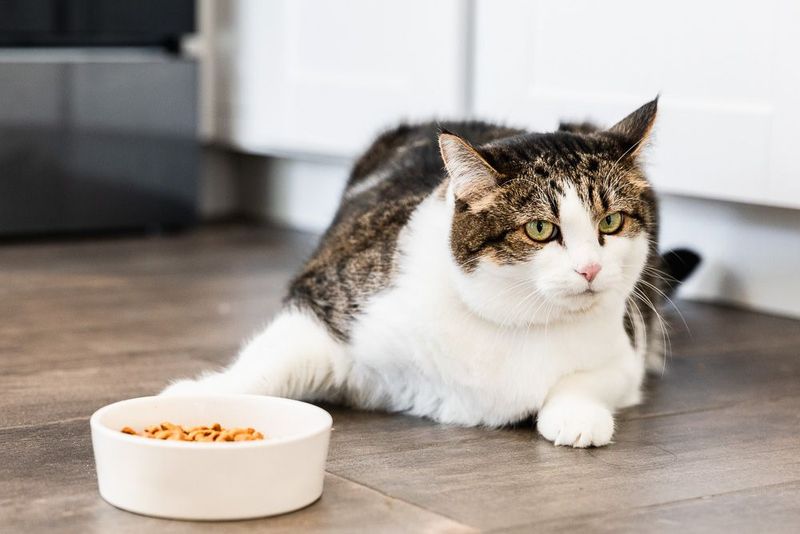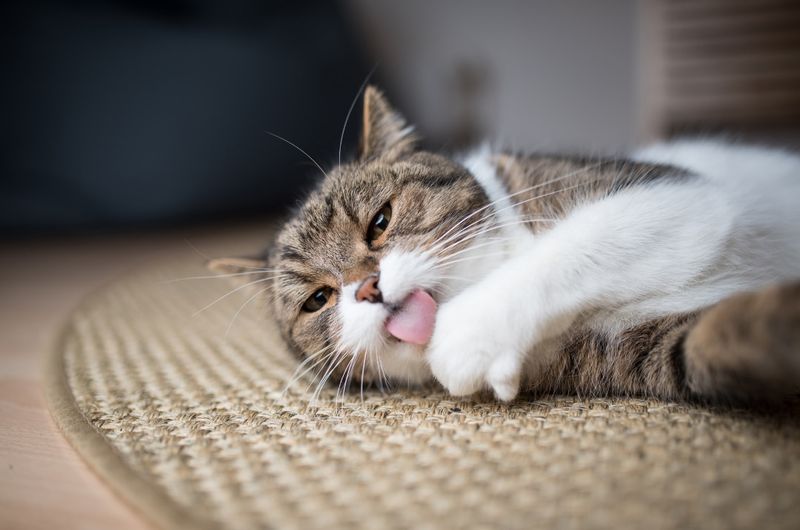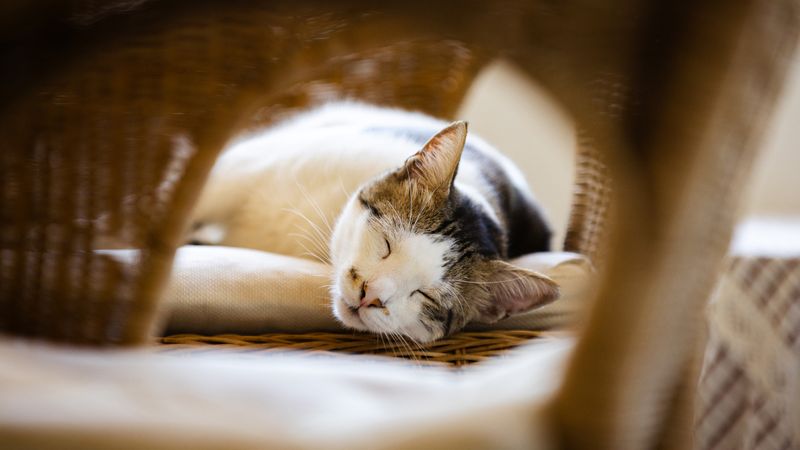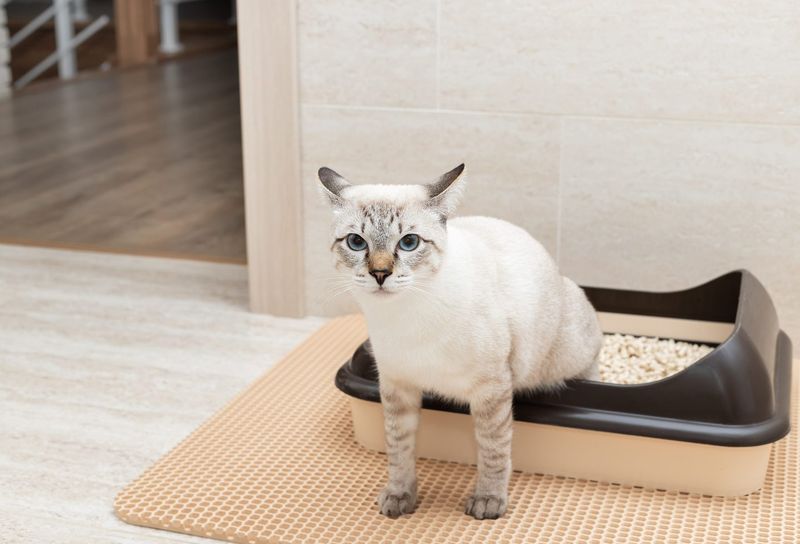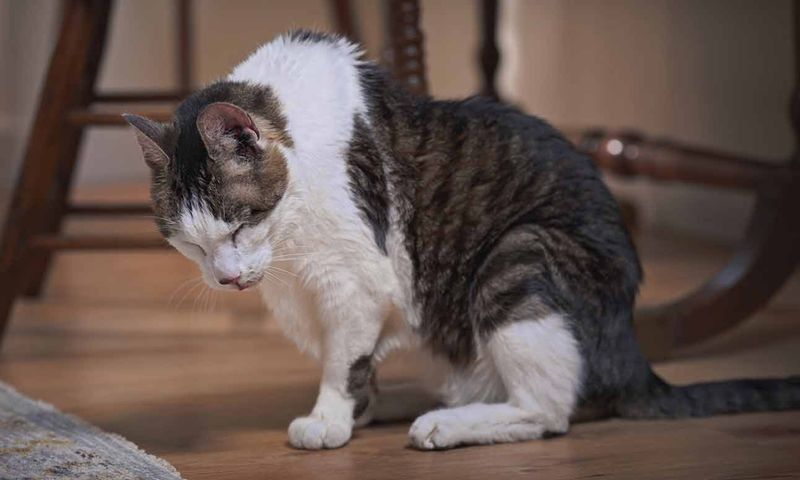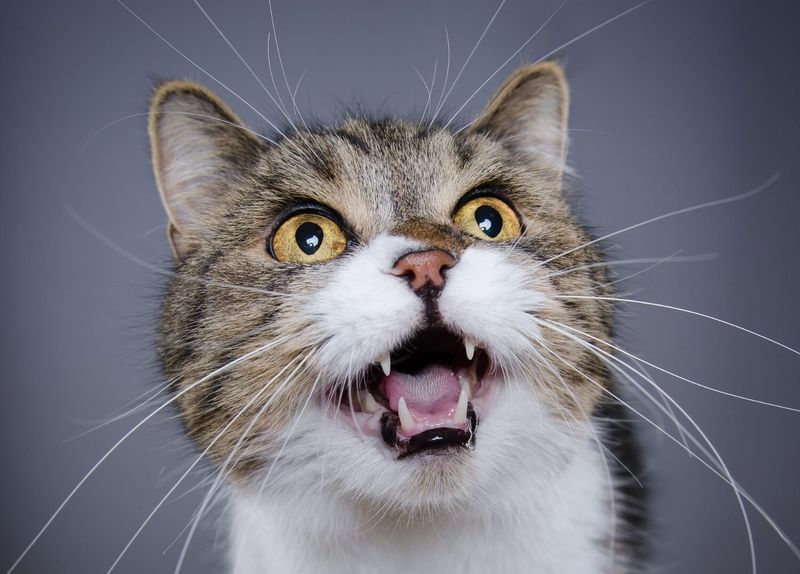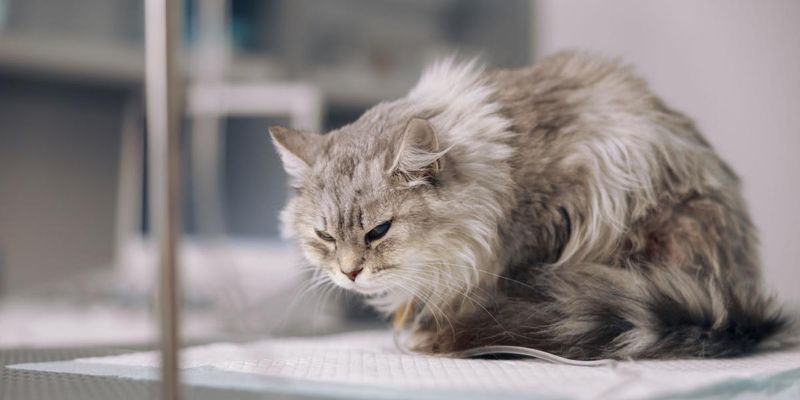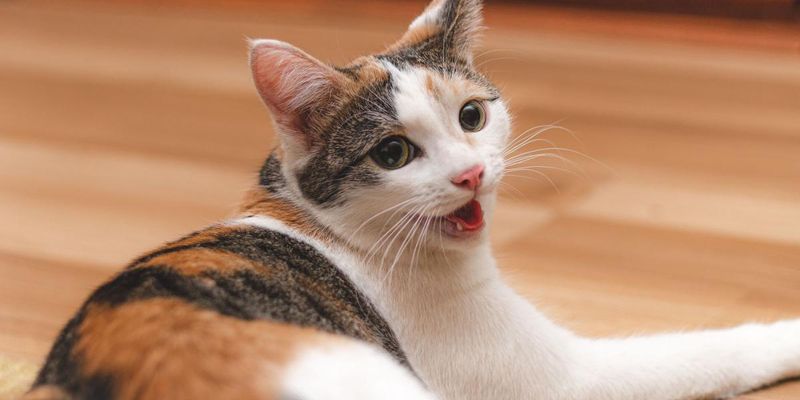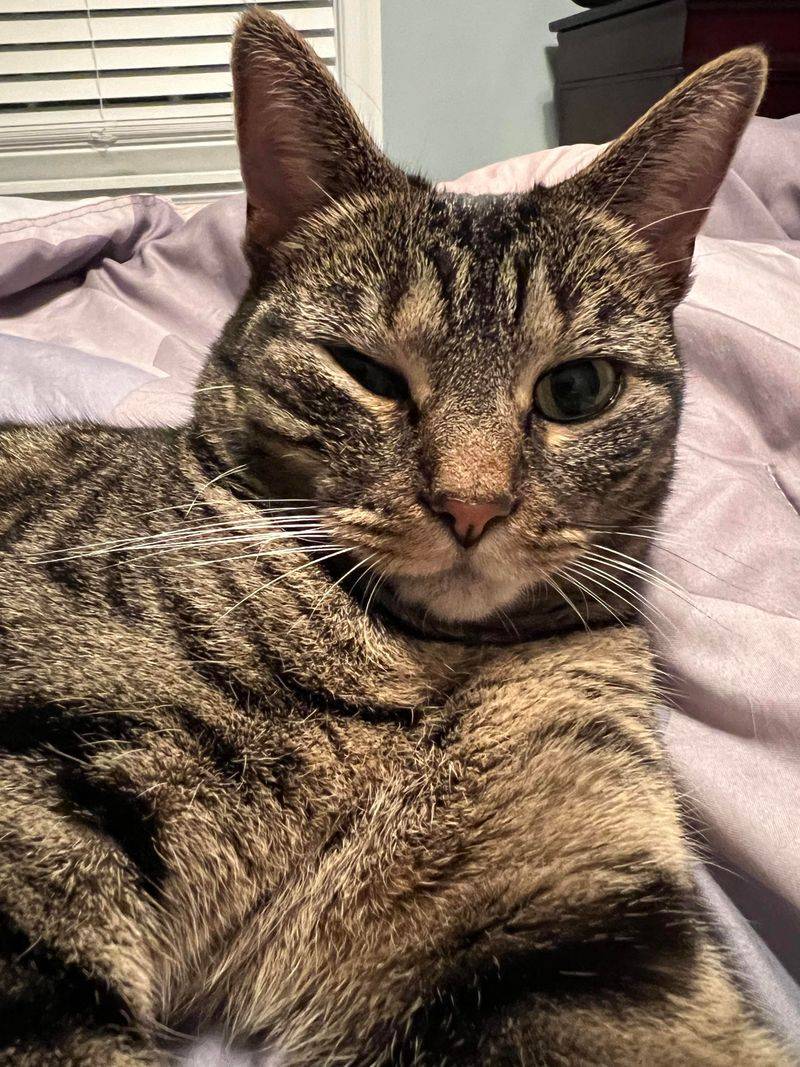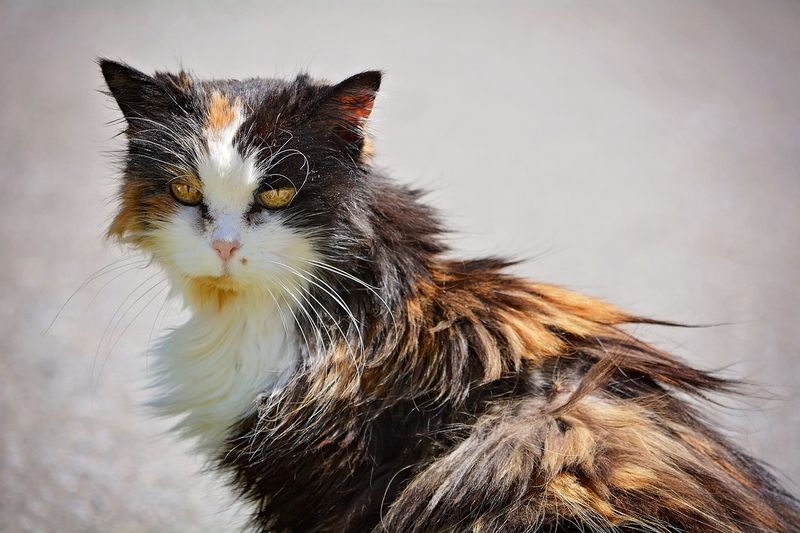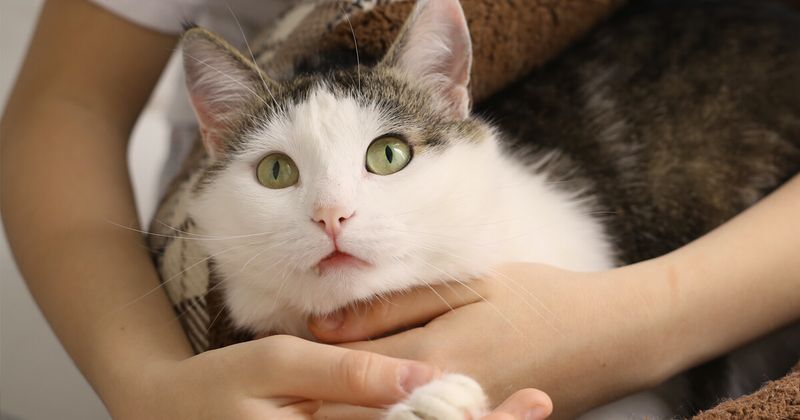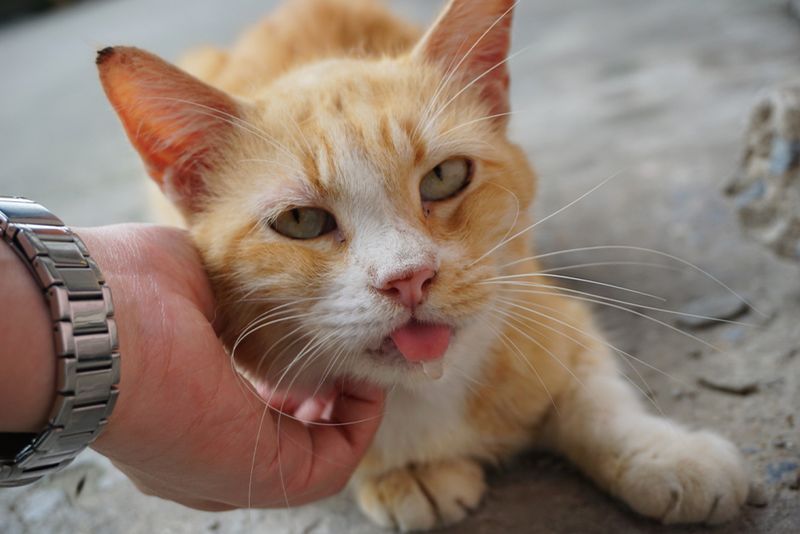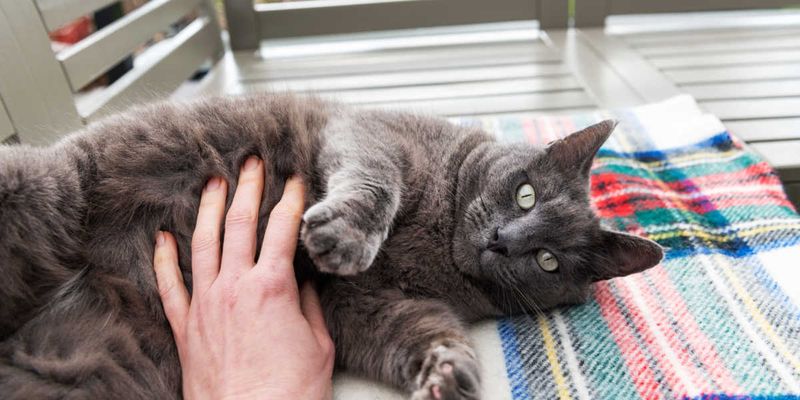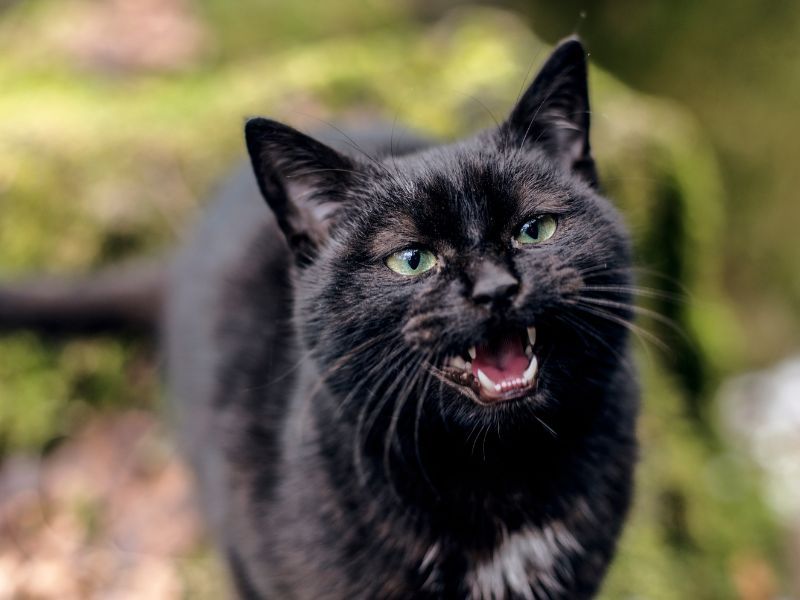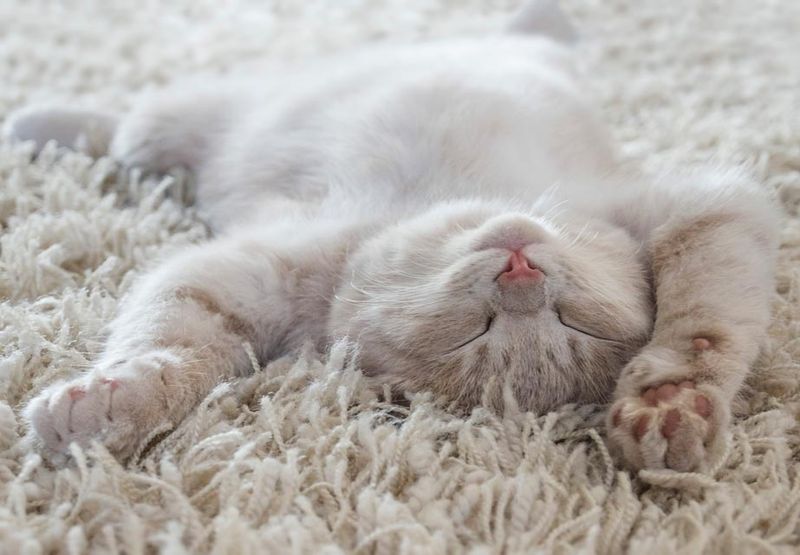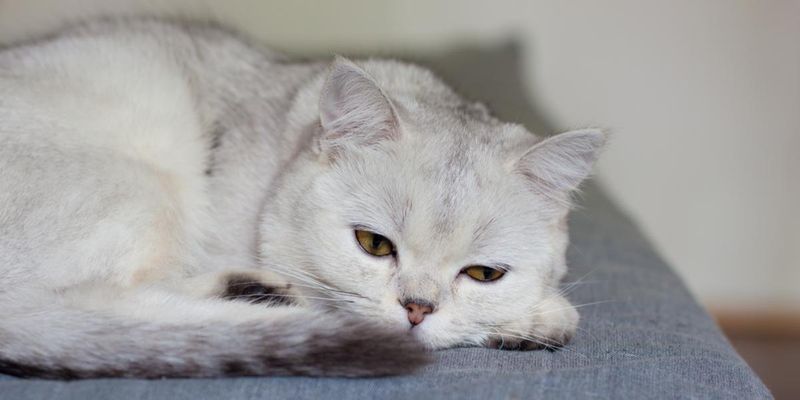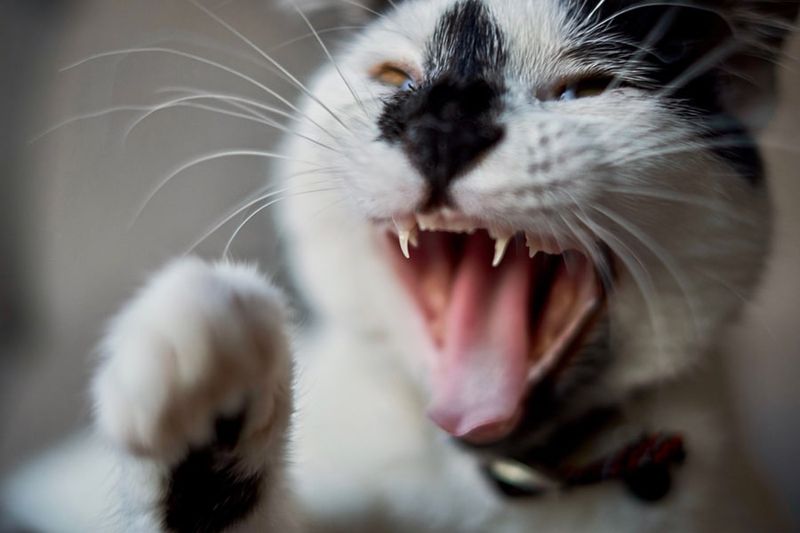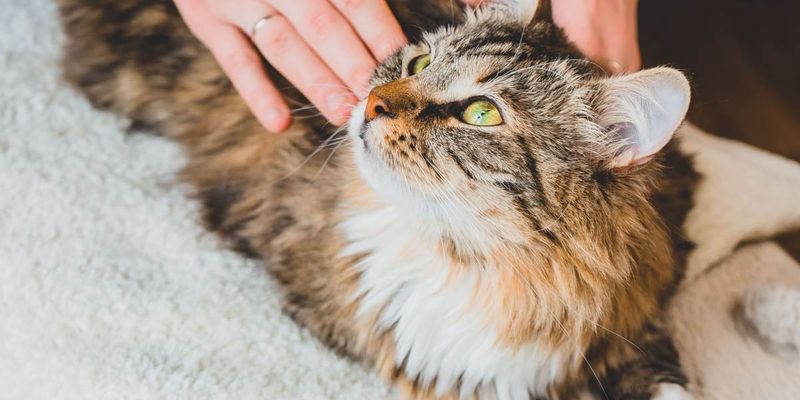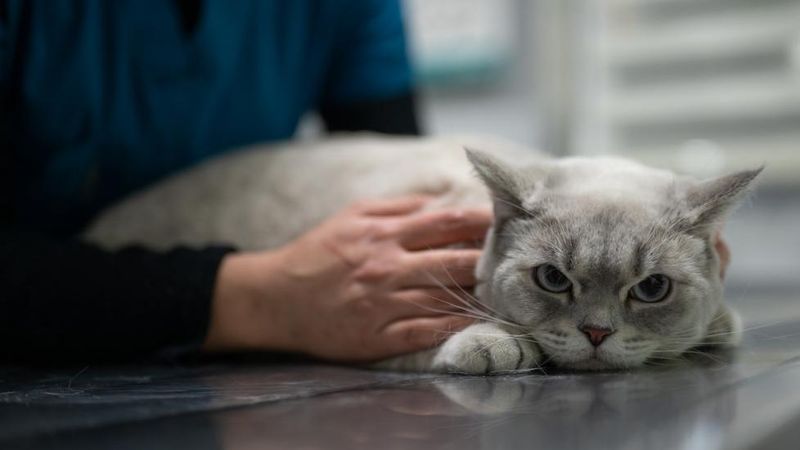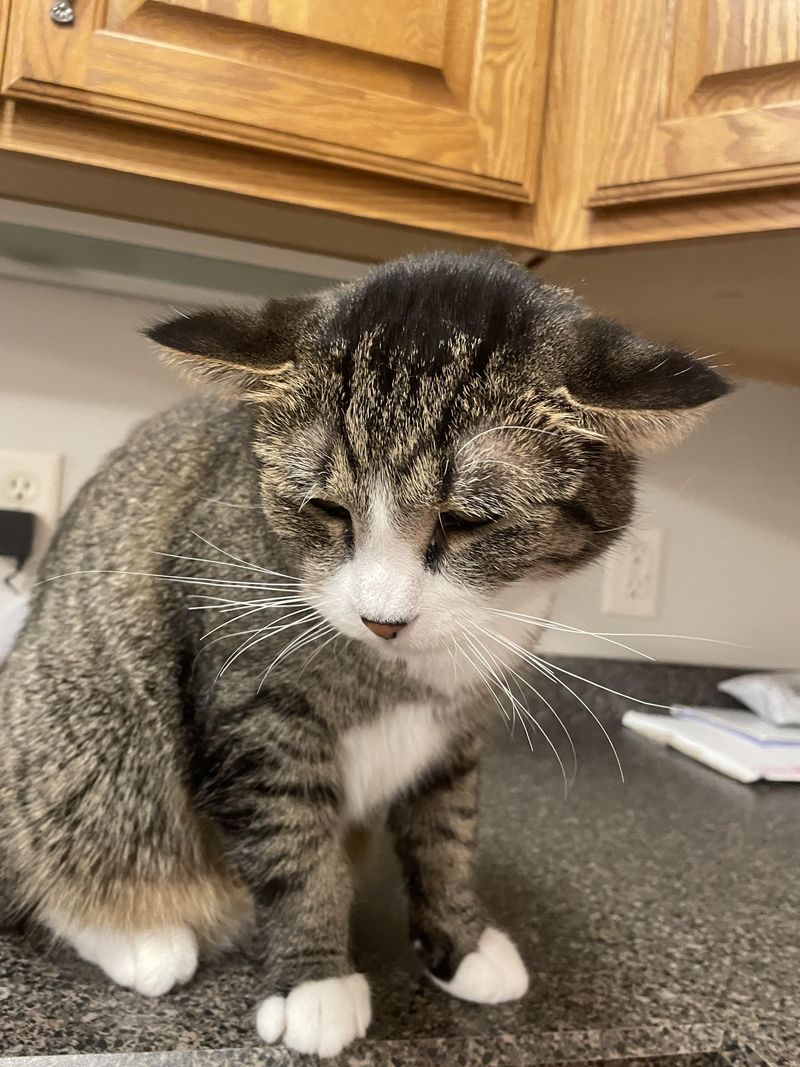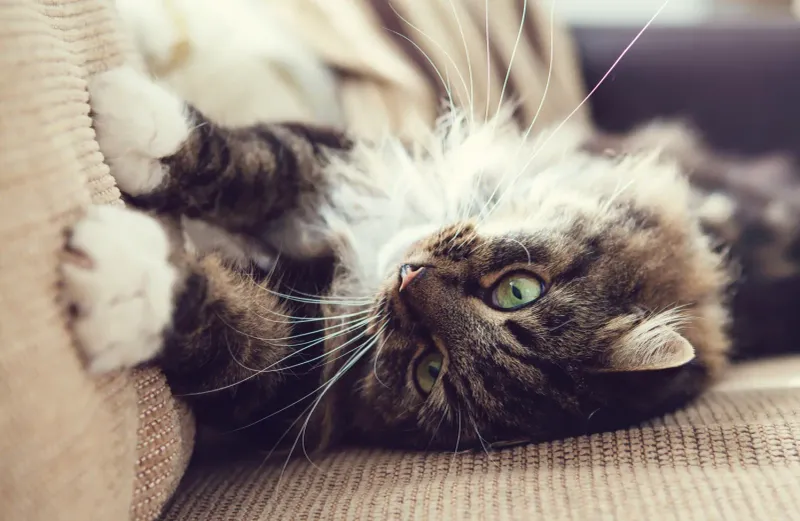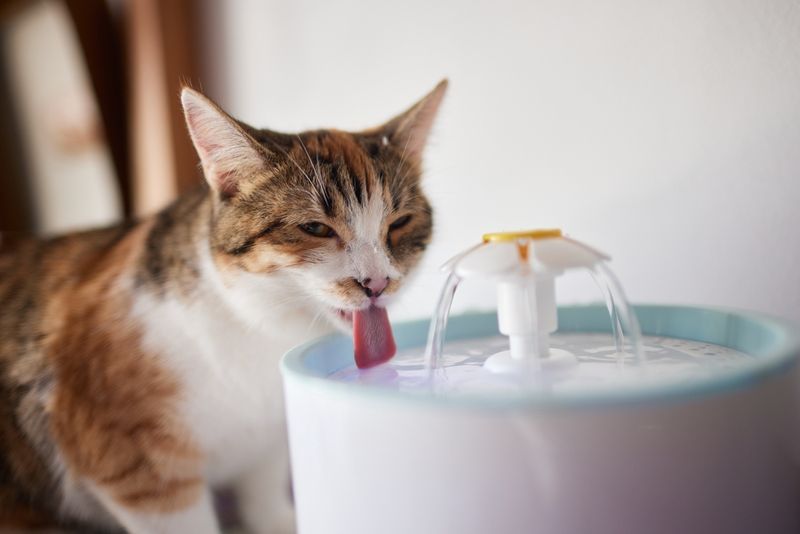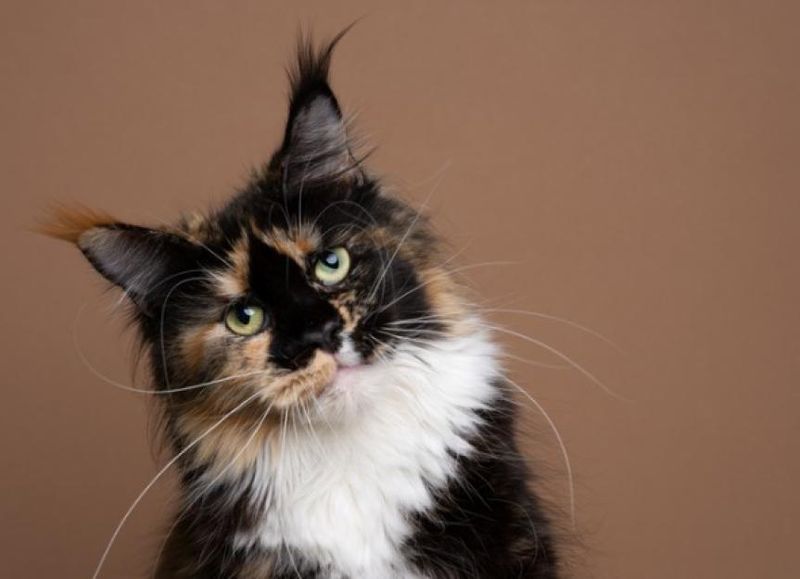📖 Table of Content:
- 1. Unusual Aggression When Touched
- 2. Reduced Appetite or Refusing Food
- 3. Excessive Grooming of One Area
- 4. Hiding More Than Usual
- 5. Changes in Litter Box Habits
- 6. Unusual Posture or Gait
- 7. Excessive Vocalization
- 8. Decreased Mobility or Activity
- 9. Breathing Changes
- 10. Dilated Pupils or Squinting
- 11. Neglected Grooming or Unkempt Appearance
- 12. Reluctance to Jump or Climb
- 13. Excessive Drooling
- 14. Tense Abdominal Muscles
- 15. Uncharacteristic Restlessness
- 16. Excessive Sleeping or Lethargy
- 17. Loss of Interest in Surroundings
- 18. Growling or Hissing Without Provocation
- 19. Flinching When Touched
- 20. Trembling or Muscle Spasms
- 21. Ears Held Flat or Back
- 22. Excessive Self-Soothing Behaviors
- 23. Changes in Water Consumption
- 24. Unusual Head Posture
Cats have inherited a remarkable ability to mask pain, a trait that helped their wild ancestors survive in harsh environments. This natural instinct makes it challenging to detect when they are unwell or injured. Careful attention to subtle shifts in behavior and physical condition is essential for timely identification.
Often, slight changes such as decreased appetite, hiding, or altered grooming habits signal discomfort. Physical signs like limping or changes in posture can also indicate that a cat is in pain. Being attuned to these clues allows for quicker responses to their needs.
Early recognition of distress helps prevent minor issues from escalating into serious health problems. Understanding these hidden signals supports better care and strengthens the bond between cat and owner. Vigilance and knowledge are key to ensuring a cat’s well-being and happiness.
1. Unusual Aggression When Touched
A normally friendly cat suddenly becoming aggressive when petted might be protecting a painful area. Hissing, growling, swatting, or biting when approached or touched in specific spots signals something’s wrong. Cats experiencing pain often lash out because touch makes their discomfort worse.
This behavioral change happens because they associate your touch with increased pain, not because they’re angry with you. Pay special attention if your cat reacts badly when you touch a particular area. This targeted sensitivity often pinpoints exactly where the problem lies.
2. Reduced Appetite or Refusing Food
When cats hurt, their interest in food often vanishes. A cat that normally rushes to its bowl but now ignores mealtime could be experiencing significant pain. Dental pain particularly affects eating habits. Watch for cats approaching food eagerly but then backing away after a single bite.
Some might only eat soft food or use just one side of their mouth. Weight loss accompanying reduced appetite is a serious red flag requiring immediate veterinary attention. Even missing a few meals can lead to dangerous complications in cats.
3. Excessive Grooming of One Area
Cats normally spend up to 50% of their waking hours grooming, but obsessive licking of one specific area often signals pain. The rough texture of their tongue provides comfort to painful spots, similar to how we rub a sore muscle.
Over-grooming can create bald patches or skin irritation. The belly, base of tail, and joints are common targets when these areas hurt. Some cats will even pull out fur clumps from painful regions. If you notice your cat focusing grooming efforts on one spot, especially if the area becomes red or hairless, it’s time for a vet visit.
4. Hiding More Than Usual
Seeking solitude is a primary feline response to pain. A social cat suddenly disappearing under beds or into closets for extended periods often indicates discomfort. This behavior stems from wild instincts – injured animals hide to avoid predators when vulnerable. Look for cats retreating to unusual locations they don’t normally frequent.
Some will choose dark, quiet spaces where they feel protected. This withdrawal behavior can happen gradually or suddenly. Don’t assume your cat just wants alone time if this behavior persists beyond a day. Prolonged hiding, especially when combined with other symptoms, warrants professional evaluation.
5. Changes in Litter Box Habits
Painful conditions often manifest through altered bathroom behaviors. A cat straining in the litter box, crying while urinating, or eliminating outside the box entirely may be experiencing urinary tract issues or constipation.
Male cats showing litter box distress require emergency attention, as urinary blockages can become life-threatening within hours. Frequent trips with minimal output suggest inflammation or obstruction. Some cats associate pain with their litter box and avoid it entirely. Arthritis can make climbing into boxes difficult, while abdominal or back pain might make squatting uncomfortable, resulting in accidents around the house.
6. Unusual Posture or Gait
Cats in pain often change how they stand, sit, or walk. A hunched back with head lowered indicates abdominal pain, while a stiff, stilted walk suggests joint or muscle issues. Some cats will hold a limb off the ground entirely when it hurts. Tail position offers clues, too.
A normally upright tail held low or tucked between the legs can signal discomfort in the hindquarters. Head tilting might indicate ear problems or neurological issues. Watch for reluctance to jump up or down from furniture. Cats naturally love heights, so avoiding elevation changes often means movement causes pain.
7. Excessive Vocalization
A typically quiet cat becoming suddenly vocal often signals distress. Different sounds communicate different problems – low growls or hisses may indicate acute pain, while persistent, mournful yowling might suggest chronic discomfort. Middle-of-night crying is particularly concerning, as pain often intensifies when cats are trying to rest.
Some cats vocalize specifically when performing certain movements, like jumping or climbing stairs. Senior cats with cognitive issues also vocalize more, but this typically happens alongside confusion or disorientation. Pain-related crying usually occurs during specific activities or when certain body areas are touched.
8. Decreased Mobility or Activity
A cat’s natural curiosity and playfulness diminish when pain takes hold. Previously active cats becoming sedentary or refusing to play with their favorite toys often suffer from hidden discomfort. This behavior change can happen gradually with chronic conditions like arthritis.
Senior cats slowing down is normal, but sudden activity drops warrant investigation. Some cats will still play but modify their movements – perhaps avoiding jumps or quick turns that aggravate pain. Morning stiffness that improves throughout the day suggests joint inflammation. Watch for cats that need longer warm-up periods before moving normally or those avoiding once-enjoyed activities entirely.
9. Breathing Changes
Healthy cats breathe smoothly and nearly imperceptibly. Labored breathing, panting, or open-mouth breathing (except after vigorous play) signals serious pain or respiratory distress requiring immediate veterinary care.
Shallow, rapid breathing often indicates chest pain, while abdominal breathing, where the stomach visibly moves more than the chest, may suggest lung issues. Some cats experiencing severe pain breathe with a distinctive grunt at the end of each exhalation. Count your cat’s resting respiratory rate occasionally when they’re healthy – normal is 20-30 breaths per minute. Knowing this baseline helps identify problematic changes during illness or injury.
10. Dilated Pupils or Squinting
Eyes truly are windows to a cat’s pain. Pupils that remain dilated in normal lighting can indicate severe pain or neurological issues. Conversely, persistent squinting or half-closed eyes often signal eye pain or light sensitivity.
Uneven pupils (one larger than the other) represent a veterinary emergency, potentially indicating head trauma or neurological problems. Some cats with headaches avoid bright lights entirely, seeking dark hiding spots. Excessive blinking, pawing at the eyes, or discharge alongside squinting suggests eye injuries or infections. Even pain elsewhere in the body can manifest through eye changes as part of the body’s stress response.
11. Neglected Grooming or Unkempt Appearance
Cats are meticulous groomers by nature, so a disheveled coat often indicates they’re too uncomfortable to maintain normal hygiene. Matted fur, especially in long-haired breeds, suggests the cat finds bending and reaching painful.
Greasy-looking fur, dandruff, or a dull coat can develop within days when grooming stops. Senior cats with arthritis frequently develop poor coat condition first along their lower back and rear legs – areas hardest to reach. Some painful cats will still attempt grooming but focus only on easily accessible areas like front paws and face. This uneven grooming creates a distinctive unkempt pattern that observant owners can recognize.
12. Reluctance to Jump or Climb
Healthy cats naturally seek height, effortlessly leaping onto counters and furniture. When this behavior changes, pain is often the culprit. Cats with joint pain, especially in hips or knees, hesitate before jumping or avoid it entirely.
Look for new behaviors like using intermediate steps to reach favorite perches. A cat that once jumped directly onto the bed might now use a nearby chair first. Some create entirely new paths through their environment to avoid painful movements. Difficulty climbing into litter boxes is particularly telling. Cats that suddenly eliminate outside boxes with high sides often can’t comfortably climb in due to joint or muscle pain.
13. Excessive Drooling
While some cats naturally drool when happy, sudden or excessive drooling often indicates oral pain or nausea. Dental disease, mouth injuries, or oral tumors can cause drooling alongside bad breath and reluctance to eat hard food.
Drool might appear clear or have blood tinges. Some cats with mouth pain will paw at their face or shake their head frequently. Nausea-related drooling typically accompanies other symptoms like reduced appetite or lethargy. Certain toxins also cause drooling, making this symptom potentially urgent. If drooling begins suddenly, especially with household plants or chemicals accessible, contact your veterinarian immediately for guidance.
14. Tense Abdominal Muscles
A painful abdomen causes cats to tense their stomach muscles protectively. This tension creates a firm, sometimes board-like feeling when gently touched, very different from the normal soft belly. Cats with abdominal pain often adopt a characteristic hunched posture, tucking their belly up and away from the ground.
They might resist being picked up or cry when their midsection is touched. This symptom requires prompt veterinary attention as it can indicate serious conditions like urinary blockages, pancreatitis, or intestinal obstructions. Some cats will lie in a “prayer position” – chest down with hindquarters raised – trying to relieve abdominal pressure.
15. Uncharacteristic Restlessness
Constant pacing, inability to settle, or repeatedly changing positions often indicates significant discomfort. Cats experiencing pain may seem unable to get comfortable no matter where they try to rest. This restlessness frequently intensifies at night when there are fewer distractions from pain. Some cats with joint pain repeatedly stand up and lie down, trying to find relief.
Others with abdominal pain circle or crouch repeatedly before lying down. Distinguish this behavior from normal play energy. Pain-related restlessness has an anxious quality and persists even when the cat seems tired. The inability to relax despite obvious fatigue is a telling sign that something’s wrong.
16. Excessive Sleeping or Lethargy
While cats naturally sleep 12-16 hours daily, pain often pushes this number higher. A cat sleeping more than usual, especially if deeply unresponsive to normal stimuli like feeding times, may be conserving energy to heal. The quality of sleep changes, too. Painful cats often sleep in unusual positions that relieve pressure on sore areas.
Some cats with joint pain sleep more because movement has become uncomfortable. Distinguish normal catnaps from pain-induced withdrawal. Healthy cats wake alert and responsive, while those in pain often seem groggy or disoriented longer. This excessive lethargy, especially when combined with other symptoms, warrants veterinary evaluation.
17. Loss of Interest in Surroundings
Cats naturally monitor their environment, tracking household activities and responding to sounds. A cat that stops showing interest in window-watching, visitor arrivals, or feeding preparations often experiences significant pain. This detachment differs from normal relaxation. Painful cats appear disconnected rather than contentedly calm.
They might stare blankly or fail to track movement that would normally catch their attention. Mental dullness can indicate pain or serious illness requiring prompt attention. Cats experiencing chronic pain gradually withdraw from environmental engagement as discomfort consumes their attention. This symptom becomes especially concerning when it develops rapidly over days rather than months.
18. Growling or Hissing Without Provocation
Unprovoked aggression toward familiar people or pets often signals pain rather than behavioral problems. A normally social cat suddenly growling when approached may be protecting a painful body part. These vocalizations serve as warnings to stay away. Cats can’t verbalize their pain, so these sounds communicate their need for space. Some painful cats hiss specifically when they anticipate being picked up or moved.
Context matters when interpreting these sounds. Aggression that occurs consistently in specific situations – like when approaching food or using the litter box – provides clues about what activities cause discomfort. Never punish these behaviors, as they’re communication attempts from a suffering pet.
19. Flinching When Touched
A subtle flinch or muscle twitch when touched in specific areas often reveals hidden pain. This reaction might be barely perceptible – a slight skin ripple or momentary tensing that owners sometimes miss. Regular gentle body checks help identify these sensitive spots. Run hands lightly over your cat’s entire body, watching for subtle reactions.
Cats with joint pain may flinch when their legs are extended, while those with dental issues react when their faces are touched. Some cats mask these reactions initially but show more obvious responses with repeated touching of painful areas. Patience during examination helps identify these subtle signs before they progress to more serious symptoms.
20. Trembling or Muscle Spasms
Muscle tremors or localized twitching often indicate significant pain or neurological issues. Unlike normal stretching or kneading behaviors, pain-related trembling appears involuntary and may worsen when specific areas are touched.
Facial tremors particularly warrant attention, as they may signal dental pain or nerve involvement. Some cats develop visible muscle spasms near injured areas or arthritic joints, appearing as rippling movements under the skin. Full-body trembling requires immediate veterinary care, as it can indicate severe pain, poisoning, or a neurological emergency. Even subtle, intermittent tremors deserve professional evaluation, especially when they occur consistently in the same body region.
21. Ears Held Flat or Back
Ear position speaks volumes about a cat’s comfort level. Ears flattened against the head often signal pain rather than just fear or aggression. This position may be constant or appear specifically when painful areas are approached. Some cats with head or ear infections hold just one ear differently. Watch for asymmetry or unusual tilting.
Ear temperature changes can indicate problems, too – unusually warm ears might suggest fever, while cold ears sometimes accompany circulation issues. Painful cats frequently alternate between normal and flattened ear positions as discomfort fluctuates. This inconsistency sometimes leads owners to dismiss the symptom. Persistent ear positioning changes, even if intermittent, deserve veterinary evaluation.
22. Excessive Self-Soothing Behaviors
Cats develop self-soothing rituals when uncomfortable, similar to humans rubbing a sore muscle. Excessive kneading, repetitive paw licking, or unusual sucking on blankets or toys can indicate discomfort when these behaviors intensify suddenly. Some cats press their heads against walls or furniture – a serious symptom requiring immediate care.
Others repeatedly knead with all four paws while lying down, trying to distract themselves from internal pain. The context of these behaviors matters. Self-soothing that happens in specific situations (after using the litter box, while eating) provides clues about pain sources. These comfort-seeking behaviors often intensify at night when distractions diminish.
23. Changes in Water Consumption
Significant increases or decreases in drinking habits often signal underlying pain or illness. Cats with kidney disease or diabetes typically drink more, while those with mouth pain may avoid water despite being thirsty. Some painful cats approach water bowls frequently but drink very little each time. Others dip their paws into water instead of lowering their heads when neck or jaw movement hurts.
Watch for cats that seem interested in water but back away after initial attempts. Tracking water consumption provides valuable diagnostic information. Measuring water levels daily or using pet fountains with reservoirs makes monitoring easier. Sudden changes, especially dramatic increases, warrant prompt veterinary consultation.
24. Unusual Head Posture
Head tilting, constant head shaking, or holding the head in unusual positions often indicates pain in the ears, teeth, or neck. Some cats with dental pain keep their heads slightly tilted to relieve pressure on affected teeth. Ear infections cause distinctive head tilting toward the painful side. Cats might also rub their heads against furniture or carpeting to relieve ear discomfort.
Head pressing – pushing the head against walls or furniture – requires emergency attention as it suggests serious neurological issues. Even subtle changes in how your cat carries their head deserve attention. Compare current posture with photos from healthier times to identify differences you might otherwise miss in day-to-day observation.
